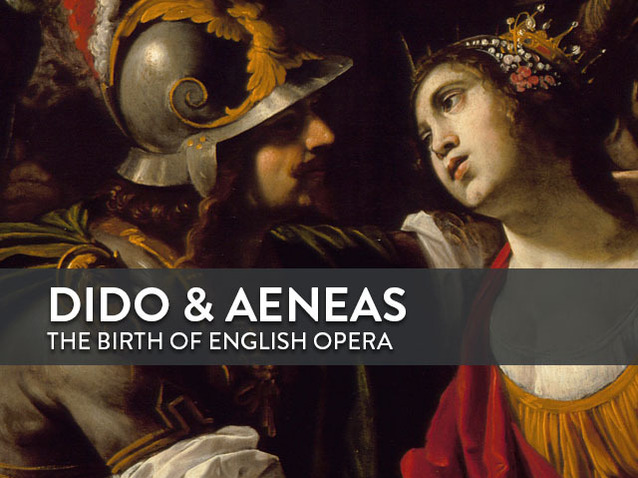 © DR
© DR
It was by no means certain that Dido and Aeneas would have a long career – in fact Purcell composed his opera for a girls’ boarding school, where it was to be performed by amateurs to a modest libretto.Despite that, whether it was because of its dramatic intensity, the themes it deals with (sense of duty and self-denial) or its music, Dido and Aeneas laid the foundations for English opera and is today ranked among the most popular British lyrical works.
This year the Salzburg Festival is giving a concert version of Dido and Aeneas with Kate Lindsey and Benedict Nelson in the title roles, and we are taking this work as an opportunity to study the origins of English opera.
***
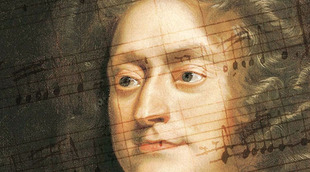
It is often said ironically that Berlioz is “the greatest English musician”.This is intended to underscore the lack of interest among the French in one of the greatest of their own musicians, who is adored by the British, and the supposed lack of great English composers.And do the French who avoid Berlioz actually think England has no music? Henry Purcell (1659-1695) would be enough by himself to disabuse them of that notion.This musician, who died at the age of 36, almost like Mozart, is an odd case.With his one and only “opera”, Dido and Aeneas, Purcell acquired the title of greatest English opera composer up until the advent of Benjamin Britten (1913-1976) three centuries later.
Only Venus and Adonis (ca. 1683) by John Blow (1649-1707), Purcell’s professor, can be considered a forerunner to the appearance of Dido and Aeneas in the uniform heavens of 17th and 18th century English music.Staged in 1689 for a girls’ boarding school, the work is based on the celebrated love story of Dido and Aeneas, immortalised by Virgil in the Aeneid.Purcell achieved a synthesis of all the influences of his time and condensed all the essential ingredients of the lyric genre into an extremely short opera.He served up the musical quintessence of passion by giving life for a very long time to the emblematic figure of the abandoned lover, Dido.
Modest, uncertain origins
Contemporary with Racine’s Esther (1689), Dido and Aeneas is an opera that was created under similar conditions.Like Racine, who was writing for the Demoiselles of Saint-Cyr at the behest of Madame de Maintenon, Purcell composed his work for a girls’ boarding school run by Josias Priest in Chelsea.It cannot be said that the birth of this masterpiece was awaited and celebrated appropriately, as it was given for the first time away from the most prominent London stages.The performance had to be adapted to the necessary constraints imposed by a limited orchestra and a selection of amateur singers.Some of the more unique aspects of Dido and Aeneas can be explained by the work’s very modest origins, and one might speak of a “chamber opera” given its extreme brevity, with three short acts packed into barely fifty minutes.We see a small instrumental ensemble, a limited number of soloists plus a few singers to form the chorus, and a few dancers for the interludes that remind us that the patron, Josias Priest, was a dance master, and that dance held a significant place in education at the time.We should keep in mind that those considered “amateurs” in the 17th century had knowledge and experience that would in no way have been considered “amateurism” as we pejoratively conceive of it today.
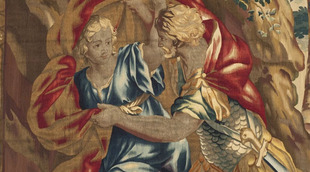
Purcell accepted all the constraints inherent in the request from his sponsor in order to transcend them by making them vastly more effective.The economy of resources became an extraordinary stimulus for his inspiration.He knew he would have to move away from the profusion of baroque opera, as he would not have the sumptuous sets or clever machinery that are its chief attractions.The protagonists would have to express all the power of their emotions without resorting to “bravura arias” that would present insurmountable technical difficulties for the young ladies.All this meant that no other opera is as simple, as devoid of vocal effects as this astonishing masterpiece: Dido and Aeneas.In addition to simplicity, there was the need to seduce easily.The audience had to be charmed right from the start by the highly accessible music.The many dances, and the introduction of witches, completed the conquest of the boarding-school audience, combining entertainment with fantasy.
Aside from these “rules of the game”, we knew very little, and the work’s dating remains uncertain.The writing of the libretto was an additional difficulty.The first score we have, the so-called Tenbury manuscript, dates from the second half of the 18th century.In the absence of the original manuscript, we are left with a vast array of reconstructions and hypotheses.Could this be a reprise of an older work?Are we in the presence of a “masque” (a brief, typically English entertainment blending several stage arts, music, theatre, dance, etc.) inserted into a court ballet, or an interlude intended to enrich a piece?How can we explain the presence of a baritone role in an opera intended for young girls?How were the roles cast when it was created?In 1700, the public discovered Dido and Aeneas under the title The Loves of Dido and Aeneas, used as a musicalinterludein an adaptation of Shakespeare’sMeasure for Measure.It appeared again in 1704, this time with the title of The Masque of Dido and Aeneas.In the 17th and 18th centuries, this little opera by Purcell could be enjoyed in the form of cantatas or in a concert version.It was not until the bicentenary of the composer’s death in 1895 that Dido and Aeneas returned to the stage.Since then, its fame has continued to spread, as evidenced by the many recordings made of it.No other opera written before Mozart has been recorded so often.
We still do not understand why nothing similar had ever been composed before in England, and why Purcell took it upon himself to go against the current fashion in England for composing Venetian-style opera. His following works, Diocletian (1690), King Arthur (1691) The Fairy Queen (1692) and The Indian Queen (1695) are “semi-operas”, i.e., highly developed stage music relating to a genre very much in vogue in London, known as “masques”:the English tradition was to involve music in the performance in order to make it more appealing and prestigious.Making use of all the resources of “wonderment”, composers, stage hands and directors competed through art and imagination to win over the public.
A myriad of forms and emotions in one hour of music
How was Purcell able to turn his little opera composed for a girls’ boarding school into the greatest English opera and, undeniably, the most popular one today?Was it because of the extraordinary quality of the libretto done by Nahum Tate?Certainly not: he was a completely negligible poet.Purcell kept only a part of his text, which was taken from Book IV of Virgil’s Aeneid.Regardless of the librettist’s talent, the tragic love story of Dido and Aeneas in itself offered a full range of dramatically intense feelings.The conflict between duty and passion is resolved painfully by the separation of the two lovers whose fates are forever intertwined.The Queen of Carthage, abandoned by Aeneas, transcends her suffering by the beauty of her singing, before greeting the death she cannot escape after the hero leaves.Act Three remains the pinnacle of the work, culminating in the final scene in which Dido’s lament is expressed in the most moving tones.Then the chorus brings the drama to an end with an evocation full of pain and contemplation.Throughout the opera, the chorus plays a role comparable to the one it had already been given in Monteverdi’s Orfeo (1607).It participates in the denouement of the action, which it comments on for the audience.
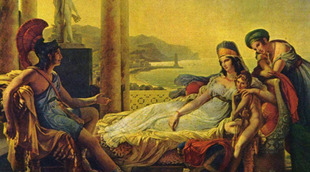
Dido and Aeneas did not become a success because of the power and beauty of the libretto written by Tate, as can be seen in the final confrontation between the two protagonists.A somewhat weak text, even vaguely silly, serves as the medium for a magnificent duet.The Queen goes so far as to reproach her lover for shedding crocodile tears:“Thus along the fatal banks of the Nile weeps the deceitful crocodile”.. The dignity and nobility of Dido’s overwhelming song take us very far away from this animal comparison!For it is the originality and extraordinary quality of the score that have made Dido and Aeneas into an opera that today regularly appears on stages worldwide.Of all the lyric works inspired by Dido, the archetype of the cruelly abandoned lover, like Ariadne on the island of Naxos, two operas stand out:Purcell’s, and, much later, that of Hector Berlioz, Les Troyens (1890).
The dramatic effectiveness and the intensity of the feelings depicted with an astonishing economy of resources explain the work’s success.Great musical and dramatic unity characterise Dido and Aeneas, which summons up a wide variety of processes in order to achieve the most perfect expressiveness without turning into a hodgepodge.This little opera, which combines a story and hero from Antiquity with the fantasy of the Elizabethan period, cannot be reduced to a catalogue of sundries.The composer takes advantage of all the resources offered him by French and Italian influences, creating a completely innovative “English” style.John Blow’s Venus and Adonis certainly inspired Purcell, who was his assistant on the Westminster organ.The two musicians were close friends.Composed between 1681 and 1683, Blow’s work was eclipsed by the success of Dido and Aeneas, but the relationship between the two works, which follow in Lully’s footsteps, is illuminating.We find the same use of various forms of expression, the same art of conciseness, the same speed in the narrative, which leads to an unavoidable denouement.
There was no need to remind the audience of the time of the fall of Troy and the arrival of Aeneas and his men in Carthage. When the curtain rises, we hear the unfortunate queen singing of her painful love: « (…) I am oppressed by a torment impossible to confess.Peace has become a stranger to me”.. And as soon as the curtain goes up, we see how Purcell utilises and combines different processes to achieve the greatest stage effectiveness.Chorus, recitative, arias, dance interludes, folk songs, instrumental music – the composer seems to use every available means to achieve his ends and create the greatest musical pleasure through emotion.
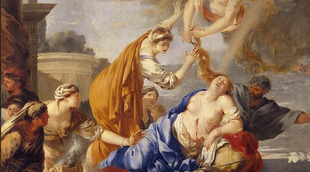
Dido and Aeneas begins with a French-style overture in two parts, in the style of Lully, with a lento followed by an allegretto moderato.After this overture, Purcell plunges us quickly into the heart of the tragedy, with the first of Dido's two laments, constructed similarly on a bass ostinato.These great arias on an insistent bass, typically English, were highly valued by Purcell.It is this same very traditional type of writing that gives the impression in the queen’s final aria of a slow and inevitable slide towards death.
The musical language is deployed in every register:passion dominates, of course, but there is also fantasy with the character of the Enchantress accompanied by her “weird sisters”, the witches. We should note here another typically English aspect.Departing from Virgilian tradition, the librettist attributes the lovers’ separation to the maleficent role of the witches who incarnate absolute evil: “Doing evil delights us, evil spells are our only art”, they sing in chorus to the Enchantress who exhorts them: “The Queen of Carthage, whom we hate, like all that prospers, shall be crushed by misfortune before the sun sets, deprived of reputation, life and love”.By her ruse, the Enchantress pushes Aeneas to set sail to found a new Troy far from the shores of Carthage.The Gods are abandoned in favour of the witch characters so often summoned to the theatre and “masques” in the early 17th century.
By accepting the narrow constraints of a very special commission, intended for a simple boarding school, Purcell seems to have paradoxically found an opportunity to get into the “masque” mode in order to access the domain of opera.A seminal work, Dido and Aeneas “invented” English opera, which had to wait until the 20th century to be reborn and flourish with Benjamin Britten.
Catherine Duault
the 17 of August, 2015 | Print
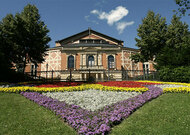


Comments